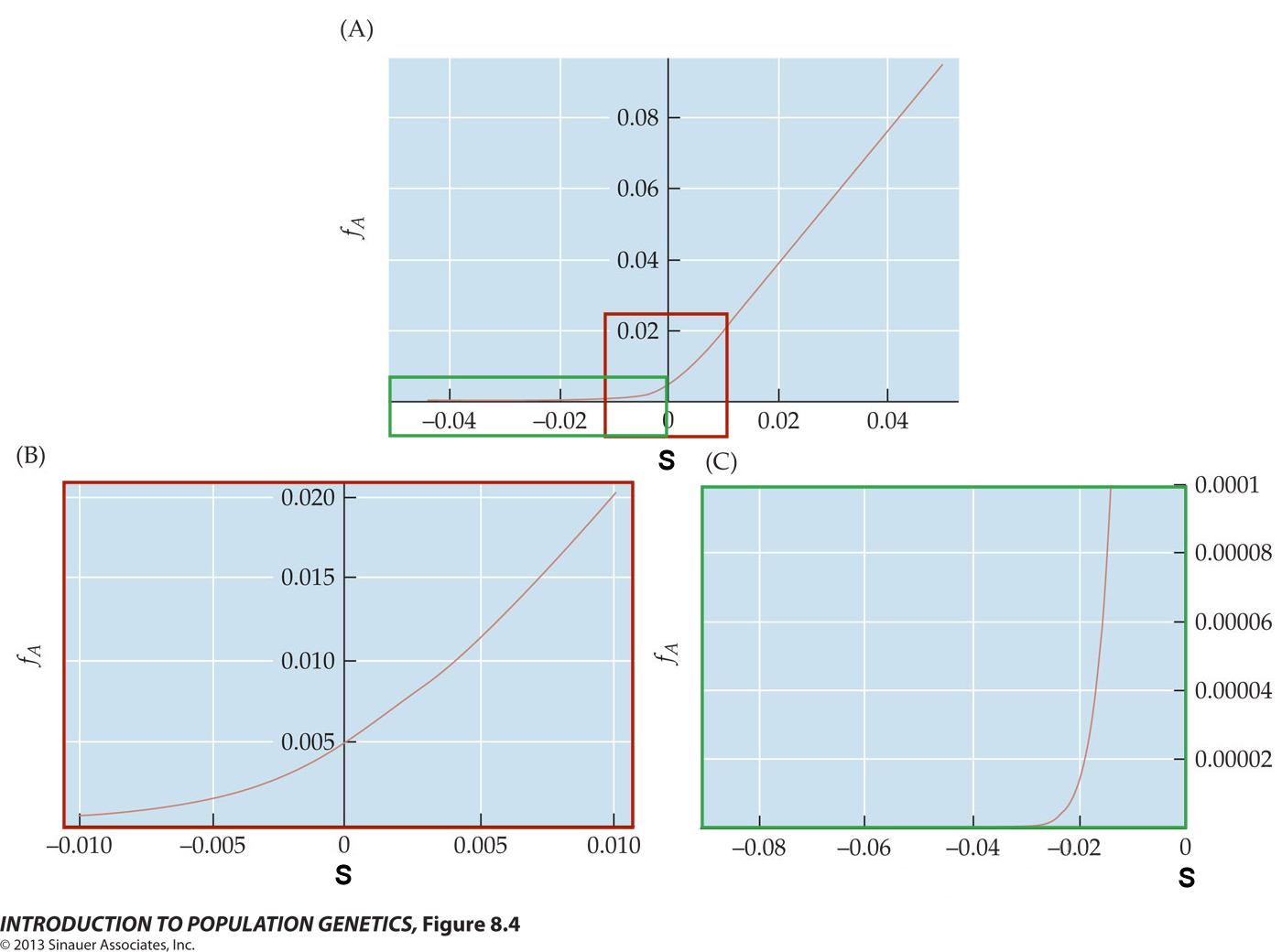
Probability of fixation u with variable s & N
Drift vs Selection in finite populations
For a new mutant allele A subject to Additive
Selection, the probability of fixation
u, given a selection coefficient s
in a population size N, is
(B) [red box in (A)] If u > 2s, selection is strongly advantageous and the expectation of fixation of the new mutant is high irrespective of N.
(C) [green box in (A)] If selection is weak ( -1 < 2Ns < 1 ), the expectation of fixation is closer to that for a neutral allele. If selection is strongly deleterious where s < 0 and (2Ns < -1), the expectation of fixation is almost nil.
u(s,N) = (1 - e-2s)
/ 1 - e-4Ns)
as plotted in
(A). The equation is true
irrespective of positive or negative selection (
s < 0 or s > 0 ).
The break point is occurs when s and 2N are
approximately reciprocals of each other. (B) [red box in (A)] If u > 2s, selection is strongly advantageous and the expectation of fixation of the new mutant is high irrespective of N.
(C) [green box in (A)] If selection is weak ( -1 < 2Ns < 1 ), the expectation of fixation is closer to that for a neutral allele. If selection is strongly deleterious where s < 0 and (2Ns < -1), the expectation of fixation is almost nil.
Figures © 2013 by Sinauer; Text material © 2025 by Steven M. Carr